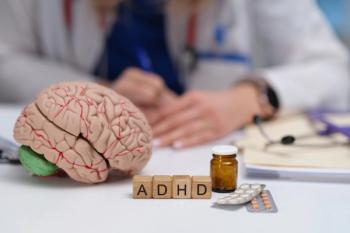
Developmental Delay and Sensory Differences in a 4-year-old Boy
Bernard B is 4-years-old and has been followed by his pediatrician for a diagnosis of motor and speech delay.
Bernard B is 4-years-old and has been followed by his pediatrician for a diagnosis of motor and speech delay. His parents became concerned when Bernard still couldn’t walk at age 13 months. He sat up at 8 months, crawled at 9 months, and walked at 18 months. Bernard began to speak at age 2 years and now has a vocabulary of about 30 words; he understands many more but cannot use phrases. He often repeats the same syllable. He also has had sensory differences and is extremely sensitive to loud or background noises (eg, vacuum cleaners, lawn mowers), food textures (he avoids smooth foods like yogurt), and certain clothes (he cannot tolerate labels in clothing, dislikes wearing shoes and socks). His parents were asked to remove him from his preschool because he will not relate to other children, and often hits or bites them.
Bernard’s full term uncomplicated pregnancy ended in spontaneous vaginal delivery. He had good Apgar scores, weighed 8 lbs at birth, and had normal neonatal screening. A family history revealed that his mother’s brother had mental disability with autistic behaviors, and that a 6-year-old son of one of his mother’s sisters had significant developmental delays. Bernard’s mother is 37 and his father is 38; neither has health problems. The parents are anxious to know if their son has a disability that could be hereditary since they wish to have another child and are concerned about their older age.
On physical examination, Bernard had a relatively normal facial appearance with large, flexible ears and a prominent jaw. He had a mild pectus excavatum with increased joint laxity. He was very active during the examination and repeatedly turned the lights on and off and tried to open the door. He did not observe social boundaries; he grabbed at pens or exam instruments, sought hugs from his parents, and ignored their commands.
1. What characteristics of the family history and facial appearance suggest a genetic diagnosis for Bernard?
2. What behavioral diagnoses would you consider for Bernard?
3. What laboratory tests would you order to confirm your diagnosis?
4. What would be the parents’ risks for similar genetic abnormalities in future children?
Answers can be found on the next page.
Answers
1. The family history indicates that mother’s brother and nephew also have developmental disabilities, implying an X-linked recessive form of mental retardation. Because women have 2 X chromosomes, abnormal genes found on 1 are offset by a normal gene copy on the second, and produce only mild symptoms or none at all in women who carry the gene. However, carrier women can pass their abnormal X chromosome to a son who will manifest disease because his Y chromosome has few genes and cannot compensate. (see
The child has subtle facial changes consistent with fragile X syndrome, including large and flexible ears. Joint laxity was noted during the physical examination. If seen in profile, he might have a large jaw, and, consistent with the connective tissue dysplasia characteristic of fragile X syndrome, would be at risk for mitral valve prolapse as he matures (see
2. The sensory changes Bernard displays suggest an autism spectrum disorder rather than ADHD, the latter being difficult to diagnose in young children. The hallmark signs of autism are difficulties with communication and socialization, abnormal activity that manifests as repetitive or stereotypic movements, a restricted or unusual level of interest in older children, and resistance to change in routines (see
3. Primary care physicians may wish to refer to genetic specialists for consideration of appropriate testing since routine chromosome analysis is now supplemented with fluorescent in situ hybridization (FISH) and high resolution chromosome techniques. The routine karyotype and individual FISH tests for specific deletions (eg, deletion 15 in Prader-Willi or 22 in DiGeorge syndrome) are increasingly being replaced by high resolution array-Comparative Genomic Hybridization (aCGH or microarray analysis) that detects all chromosome changes (see
4. The mother is an obligate carrier for fragile X syndrome based on her affected relatives, and thus each future pregnancy has a 25% risk for a boy with fragile X syndrome (each girl will have a 50% risk to be a carrier and, if a carrier, a 25% chance to have behavior or learning differences. The mother also has an increased risk (approximately 1 in 100) for chromosome disorders because of her age. Once aware of these risks, the couple could choose preimplantation genetic testing or prenatal diagnosis with routine karyotype and fragile X DNA testing.
Newsletter
Access practical, evidence-based guidance to support better care for our youngest patients. Join our email list for the latest clinical updates.








